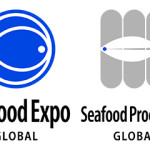Here’s a recap of this week’s must-read SeafoodSource news stories and commentaries:
• International trade journalist and SeafoodSource contributor Greg Rushford provided readers a fascinating perspective on the cyclical labor issues facing the U.S. tuna industry in his commentary, "Charlie the Tuna’s economic woes". Of course, StarKist isn’t the only tuna company that has shifted its operations partially or totally out of American Samoa because of a mandatory increase in minimum wage. But Rushford points out that low wages are what brought tuna canners to American Samoa in the first place.
• SeafoodSource Contributing Editor Mike Urch highlighted new technology that allows for the safe — and environmentally friendly — transport of live shellfish across the Atlantic Ocean. In his commentary, "Giving new life to live shellfish", Urch explains how British company Homarus Atlantic Ltd. has already fully booked live lobster shipments from Canada to Europe for this year and next by offering a shipping method that puts the critters into a state of semi-hibernation for their journey. Now the company is looking into shipping live bivalve shellfish.
• Another milestone in the highly controversial Marine Stewardship Council certification of British Columbia sockeye salmon was reached this week when it was announced that three units of the fishery earned certification as well managed and sustainable. The fourth and final unit, the Fraser River, is still under assessment. Outspoken opponents to the fishery’s certification are pointing to record-low returns on the Fraser in recent years as reason enough to not permit use of the eco-label.
• Sticking with salmon, Ed Cassano, the Monterey Bay Aquarium’s director of conservation outreach, defended Seafood Watch’s recent “avoid” recommendation for Oregon and California salmon harvested south of Cape Falcon, Ore. Because salmon runs failed for three straight years to meet projected escapement goals, a “precautionary approach” is necessary, Cassano said. Evidence of improvement, he added, must be demonstrated before you reopen a troubled fishery like West Coast salmon.
• Confused about the United States’ official stance on seafood consumption and its impact on consumers’ health? Stand in line. Despite a litany of research that shows seafood consumption has more health benefits than any potential — some would say hypothetical — risks, the federal government still stands by its 2004 health advisory for pregnant and nursing women. Hopefully, a budding coalition of more than 125 nutritionists, scientists and health professionals around the world can convince the U.S. Food and Drug Administration to update its advice on fish consumption and pregnancy.
All Commentaries >




